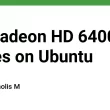Bluetooth has undergone significant evolution over the past few years. As of 2025, it is a foundational technology for wearables, smart homes, medical devices, industrial systems, and edge AI applications.
This article outlines the most impactful developments in Bluetooth technology that every developer working on connected systems should be aware of.
1. Bluetooth LE Audio and Auracast Broadcast Audio
LE Audio, standardized around the LC3 codec, brings high-quality audio at lower power and supports multi-stream audio—ideal for truly wireless earbuds.
Auracast Broadcast Audio builds on this to enable one-to-many audio sharing. Key use cases include:
- Public address systems in transportation hubs
- Multi-user audio in fitness classes, museums, or schools
- Shared listening experiences for entertainment and accessibility
- For developers building audio apps or products, LE Audio and Auracast are critical technologies to start adopting.
Technical Note: LC3 supports bitrates from 160 kbps down to 32 kbps, balancing fidelity and energy consumption.
2. High-Precision Location with Bluetooth Direction Finding
Recent enhancements in Bluetooth Direction Finding introduce sub-meter accuracy through Angle of Arrival (AoA) and Channel Sounding techniques.
Use cases include:
- Indoor navigation
- Warehouse inventory tracking
- Asset location in manufacturing plants
- Spatial audio alignment in AR/VR
Open SDKs from vendors like u-blox and Nordic make prototyping easier for location-aware applications.
3. Periodic Advertising with Responses (PAwR)
Introduced in Bluetooth 5.4, PAwR enables one-to-many communication with time-synchronized, energy-efficient updates. This is ideal for:
- Electronic Shelf Labels (ESLs)
- Large-scale sensor networks
- Any scenario with thousands of devices that need brief, periodic interactions
Developers building large BLE networks should explore PAwR and its Encrypted Advertising Data feature for broadcast provisioning.
4. Bluetooth Mesh Enhancements
Bluetooth Mesh has matured into a robust option for scalable, interoperable, and vendor-neutral deployments.
Improvements include:
- Friend-Low Power Node (LPN) performance tuning
- Time-synchronized scene transitions
- Multi-subnet coexistence and bridging
- Reduced relay overhead with managed flooding
Mesh is ideal for smart buildings, lighting systems, and industrial control where reliability and scale are key.
5. Enhanced Security and OOB Pairing
Security has become a central priority:
- Mandatory use of LE Secure Connections in sensitive environments
- Out-of-Band (OOB) pairing via NFC or QR codes for headless or secure devices
- Experimental use of post-quantum encryption for long-life medical and industrial devices
For developers: always choose authenticated pairing methods and use ECDH-based key exchange wherever possible.
6. BLE for AI and Edge Devices
Bluetooth is now integrated deeply into AI-based systems. Example applications:
- Smart glasses using BLE to transmit gaze and sensor data to a phone or edge model
- BLE-connected medical sensors for real-time vital classification
- Fitness wearables streaming multi-sensor data to local ML models
Bluetooth 5.3 and beyond enables consistent throughput and low latency while staying power-efficient, making it a great fit for on-device inference.
7. Dual-Mode and Multiprotocol SoCs
Modern Bluetooth SoCs support multiple radios on a single die:
- BLE + Zigbee/Thread (used in Matter)
- BLE + Wi-Fi (for audio and high-bandwidth data)
- BLE + Sub-GHz (for long-range sensor fusion)
Developers building smart hubs, gateways, or wearables should consider these hybrid SoCs to reduce board complexity and improve protocol coordination.
8. Developer Tools and Testability
Bluetooth developer tools have improved substantially:
- Android and iOS BLE stacks now support full trace and decode for LE Audio and Direction Finding
- AI-based parsers for HCI logs accelerate debugging and regression analysis
- Tools like Ellisys, Teledyne LeCroy, and Nordic’s nRF Connect now support PAwR and Auracast
- Open-source analyzers like Wireshark + extcap, btmon, and BtleJack continue to mature
Simulation tools such as BlueSim allow virtual validation of BLE firmware against production HCI traces.
What’s Next?
Looking ahead:
- Bluetooth 6.0 is expected to focus on deterministic latency and time-sensitive applications
- BLE-based IPv6 mesh networks may become viable again with 6LoWPAN enhancements
- Dynamic channel selection and AI-based frequency agility are in early experimentation
The future of Bluetooth is more than wireless communication—it is programmable, secure, and foundational for real-time, intelligent systems.
References
- Bluetooth SIG, “LE Audio Overview.” https://www.bluetooth.com/learn-about-bluetooth/recent-enhancements/le-audio/
- Bluetooth SIG, “Auracast Broadcast Audio.” https://www.bluetooth.com/blog/introducing-auracast-broadcast-audio/
- Nordic Semiconductor, “nRF Connect SDK.” https://developer.nordicsemi.com/nRF_Connect_SDK/
- u-blox, “Bluetooth AoA/AoD Solutions.” https://www.u-blox.com
- Bluetooth SIG, “Core Specification 5.4 Summary.” https://www.bluetooth.com/specifications/specs/
- Silicon Labs, “Multiprotocol SoC Architecture.” https://www.silabs.com









![[apr-2025]-ai-community — activity-highlights-and-achievements](https://prodsens.live/wp-content/uploads/2025/05/35201-apr-2025-ai-community-activity-highlights-and-achievements-110x110.jpeg)


